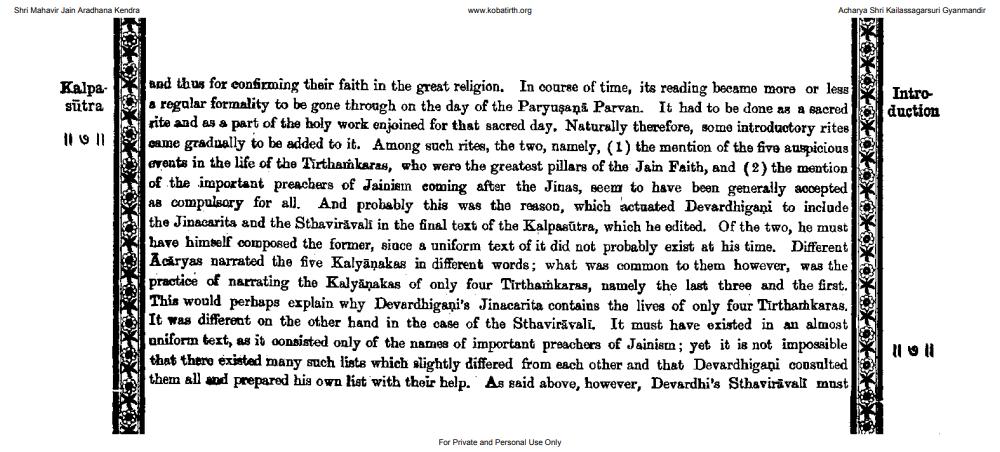________________
Acharya Shri Kailassagarsuri Gyanmandit
Shri Mahavir Jain Aradhana Kendra
www.kobatirth.org
Kalpa sutra
III
M
and thus for confirming their faith in the great religion. In course of time, its reading became more or less Intro a regular formality to be gone through on the day of the Paryusani Parvan. It had to be done as a sacred Koduction rite and as a part of the holy work enjoined for that sacred day. Naturally therefore, some introductory rites ame gradually to be added to it. Among such rites, the two, namely, (1) the mention of the five auspicious events in the life of the Tirthamkaras, who were the greatest pillars of the Jain Faith, and (2) the mention of the important preachers of Jainisin coming after the Jitas, seem to have been generally accepted as compulsory for all. And probably this was the reason, which actuated Devardhigani to include the Jinacarita and the Sthaviršvalf in the final text of the Kalpasútra, which he edited. Of the two, he must have himself composed the former, siace a uniform text of it did not probably exist at his time. Different Adryas narrated the five Kalyāņakas in different words; what was common to them however, was the practice of narrating the Kalyāņakas of only four Tirthamkaras, namely the last three and the first. This would perhaps explain why Devardhigani's Jinacarita contains the lives of only four Tirtbarhkaras. It was different on the other hand in the case of the Sthavirávali. It must have existed in an almost uniform text, as it consisted only of the names of important preachers of Jainisrn; yet it is not impossible that there existed many such lists which slightly differed from each other and that Devardhigapi consulted them all wod prepared his own list with their help. As said above, however, Devardhi's Sthavirivali most
For Private and Personal Use Only




